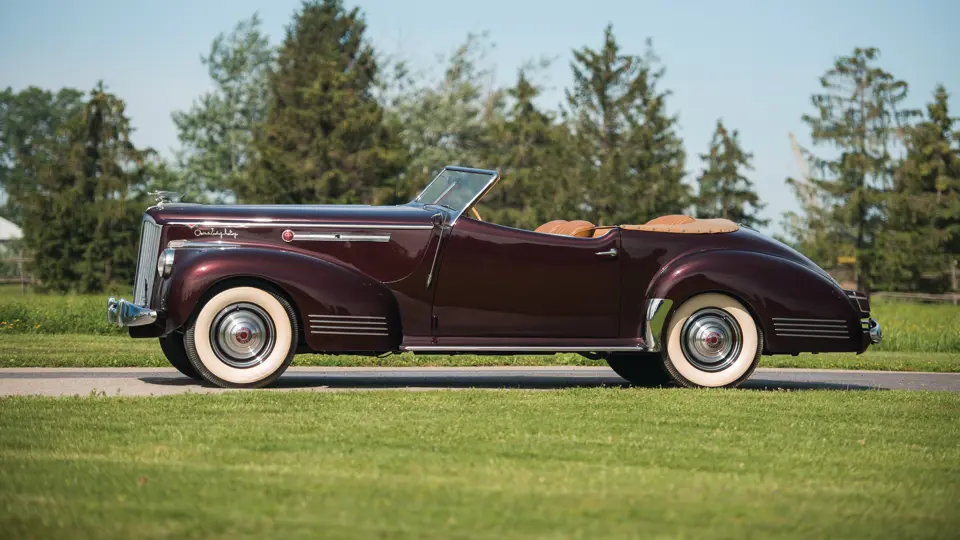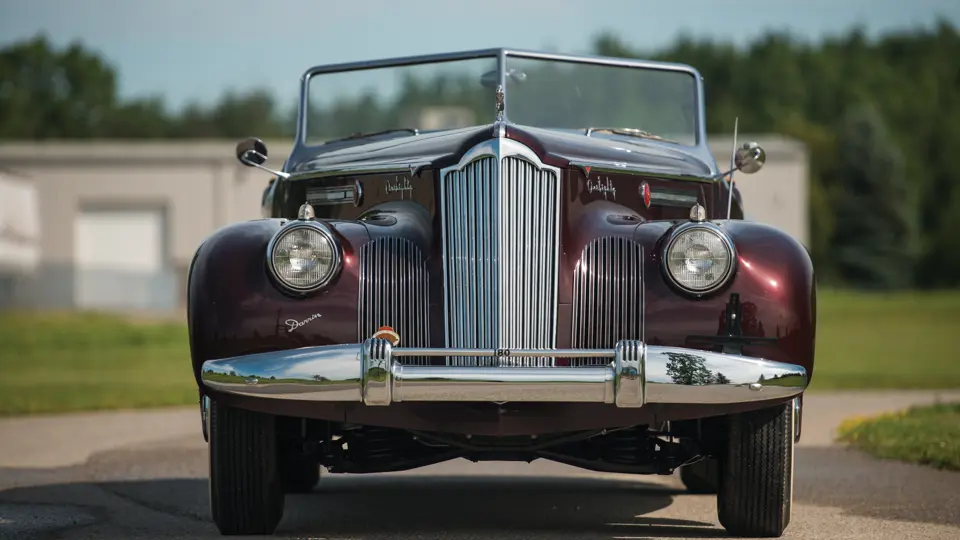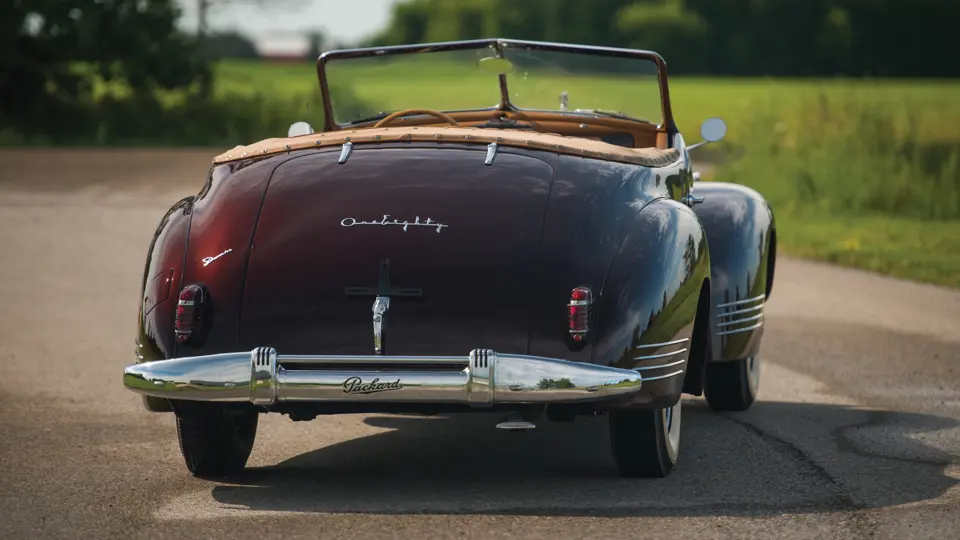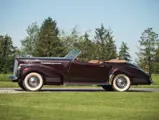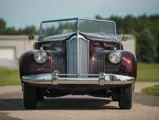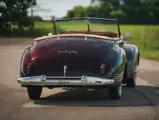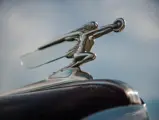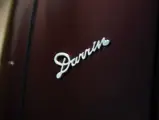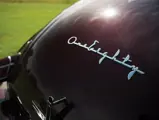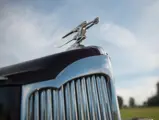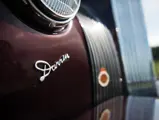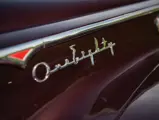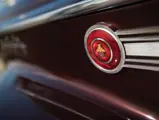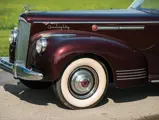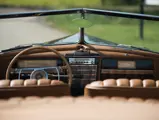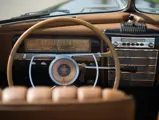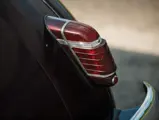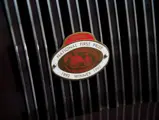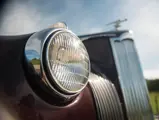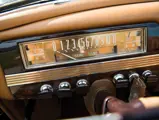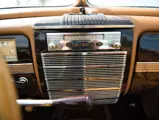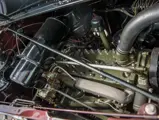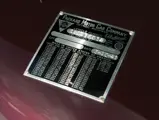
1941 Packard Super Eight One-Eighty Convertible Victoria by Darrin
{{lr.item.text}}
$407,000 USD | Sold
The Thomas F. Derro Collection
{{bidding.lot.reserveStatusFormatted}}
- Offered from The Thomas F. Derro Collection
- “Banacek’s Darrin,” used in the popular 1970s NBC television series
- Beautiful, correct restoration by Packard expert Don Sears
- AACA, CCCA, and Pebble Beach Concours award-winner
- Perhaps the most famous extant 1941–1942 “Darrin”
In 1939, Packard purchased the rights to Howard Darrin’s design for a sleek four-passenger convertible, which he had been hand-building at his shop in Hollywood, California, for members of the movie colony elite. Packard put the design into limited production as the Convertible Victoria by Darrin, which was built at factories in Indiana and, later, in Ohio, from 1940 through 1942. It is considered one of the most beautiful Packards of all time, so much so that when the producers of the popular 1970s NBC television series Banacek required a classic automobile for the suave main character, a “Darrin” was what they chose.
Two Darrins were utilized for the filming of Banacek. That offered here was the main filming car, used for most photography out of Boston, and appeared with George Peppard in most scenes of the series, in which it is accurately described by Banacek as a 1941—one of 35 made that year. A second, 1942 model (with its side grilles “disguised” in most scenes) was used for occasional shots in Los Angeles. That car survives as part of a prominent Midwestern collection.
According to former owner Tom St. Martin, the Banacek '41 Packard was originally delivered in March 1941 in Florida. has a history known back to 1951, when it was owned by Earl Perry Fletcher of Gary, Indiana. It was subsequently owned by George Taylor of Gary, then Robert Friggens of New Mexico, who sold it in 1971 to Jim Carlson of Massachusetts. James O'Dea of Westport, Connecticut, purchased the Packard in 1972, and was the owner who supplied it for the filming of the television series.
Following its use in California, the Banacek '41 Packard made its way to Wisconsin, where it was eventually acquired in 1980 by the late Bob Adams. In 1981 the car was acquired from Tom Crook by Tom St. Martin, who drove it for several years before beginning its ground-up restoration with Lakeland Restorations of Minnesota. In a recent conversation, Mr. St. Martin recalled that the car showed evidence of a early rear end collision, which was properly repaired with new sheet metal, and that numerous "N.O.S." and original parts were utilized in the restoration.
In 1990 the car was sold to Packard guru, Don Sears, who oversaw the completion of the high-quality, authentic restoration, including installation of a correct 1941 engine, replacing the cracked original block. Virtually every element was attended to, including some oft-overlooked details as the correct combination of a brown marbled plastic dashboard and tan steering wheel. The result gathered numerous awards, including at the Pebble Beach Concours d’Elegance, in Antique Automobile Club of America judging in 1992, and a 100-point score with the Classic Car Club of America, with which the car holds Senior Premier badge number 1679.
Sears sold the Packard in 1992, after it had won virtually all that it could win. The following year it joined Thomas F. Derro’s collection, where it has been well maintained but only occasionally shown. Recently polished, detailed, and mechanically serviced, it proved to have excellent power for the highway in a recent road test. Indeed, one authority has commented that these cars were able to outperform the vaunted Buick Century, the “banker’s hot rod” of the same era.
Outside of the Darrin used by Clark Gable, there is no more well-known example of this most legendary of Packards than the authentic Banacek 1941 model. It is a car for the suave, debonair adventuresome man of distinction; it was true in 1941, it was true in the early 1970s, and it is still true today.

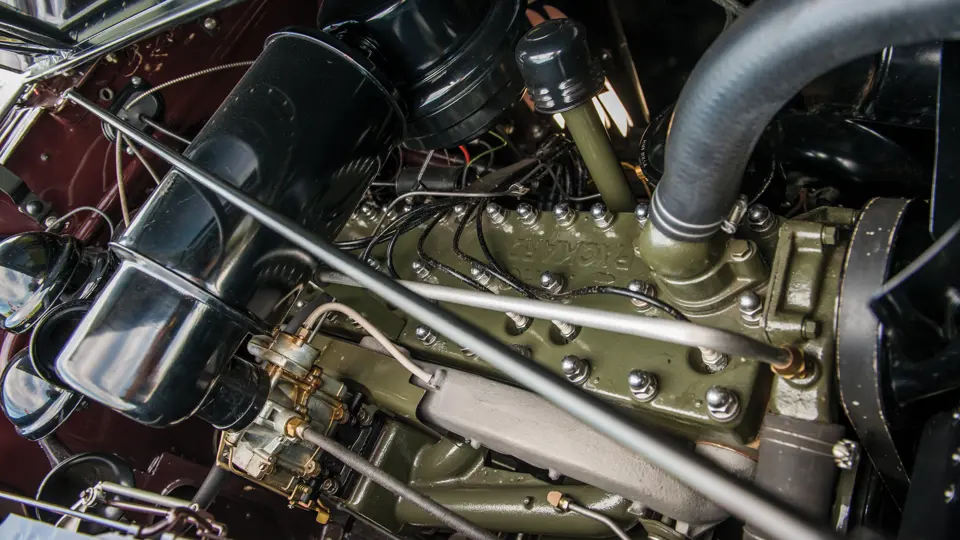
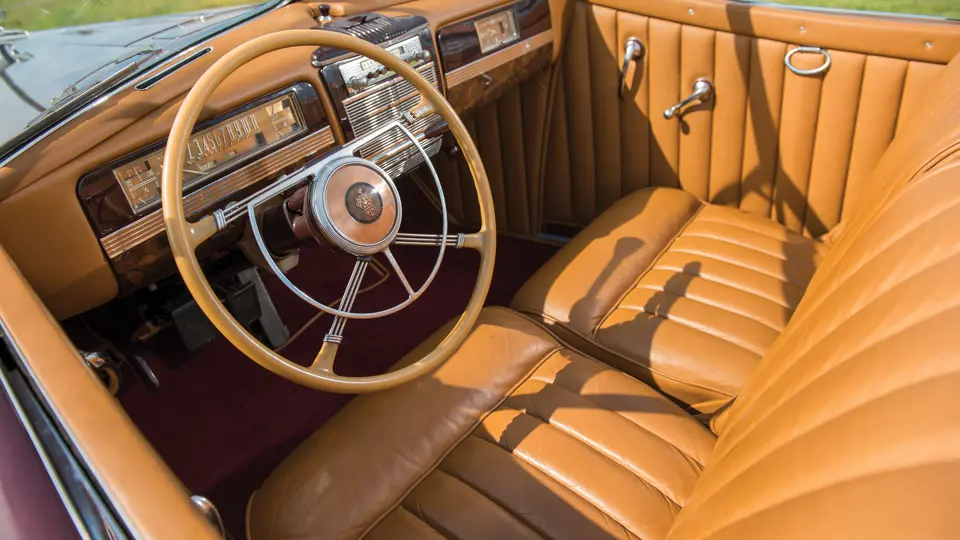

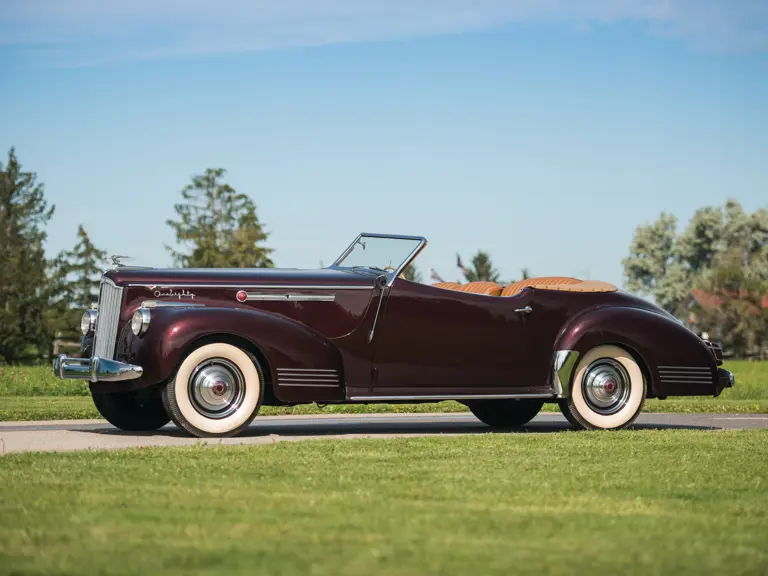
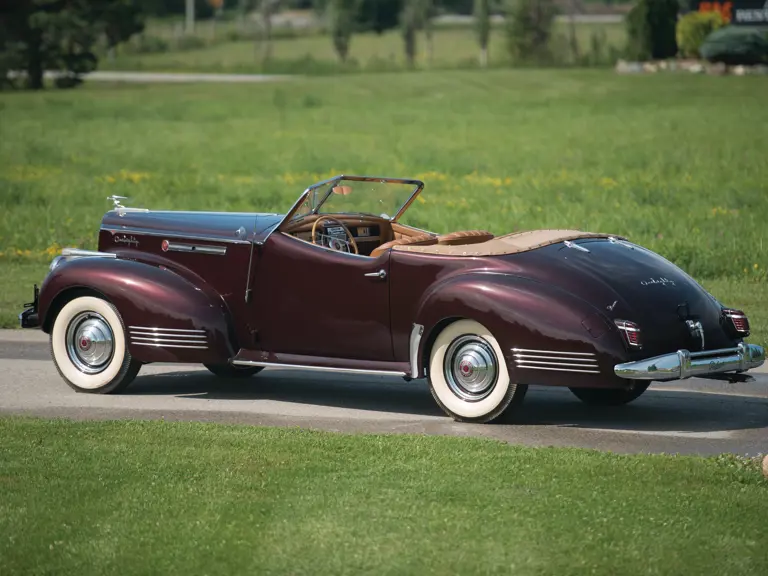
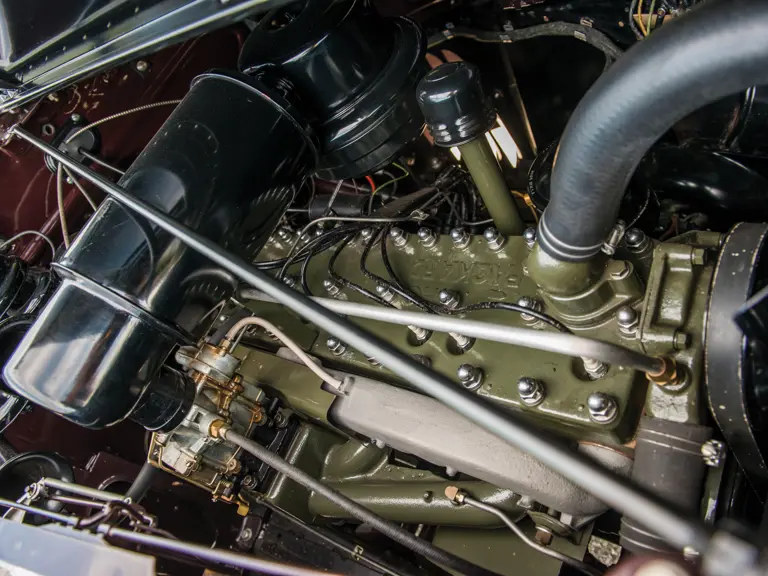
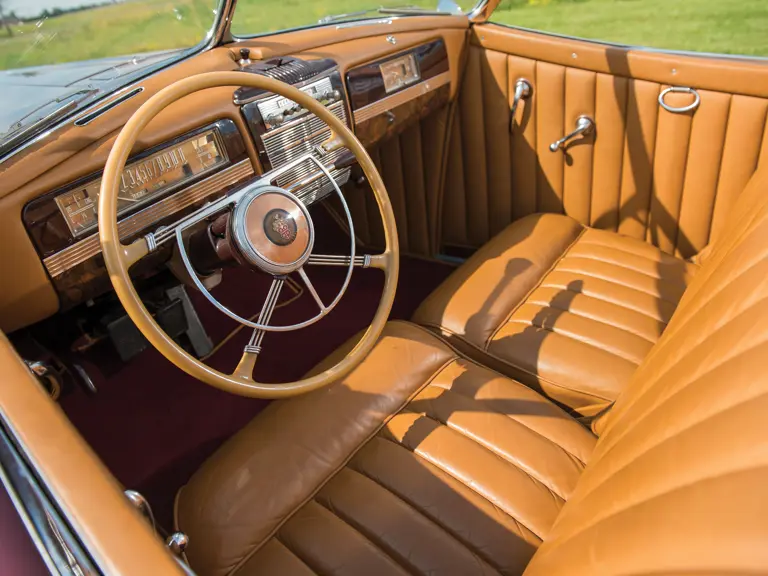

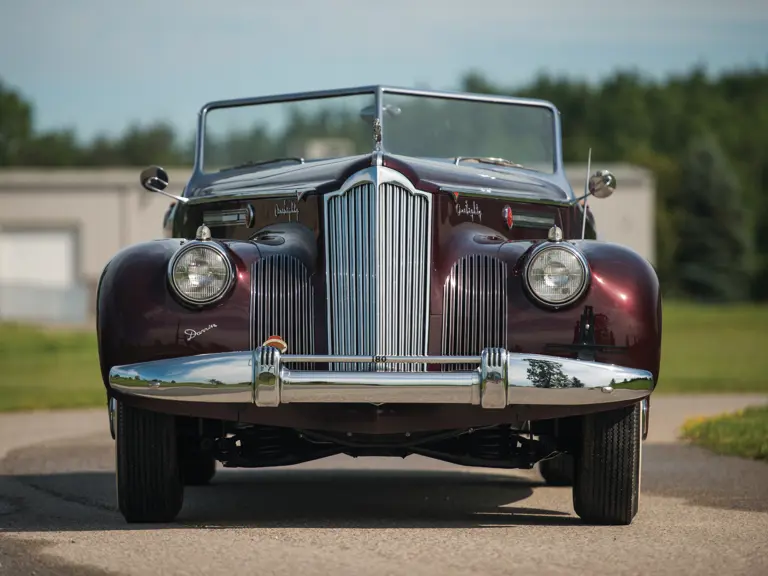
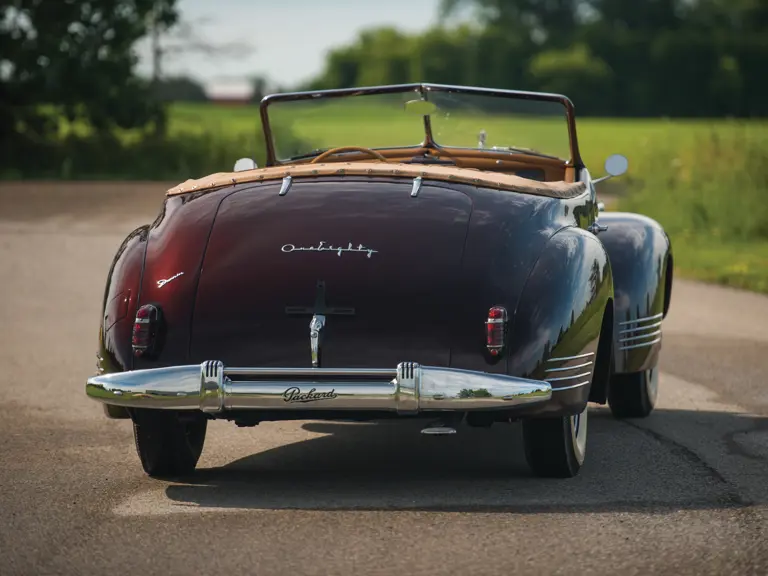

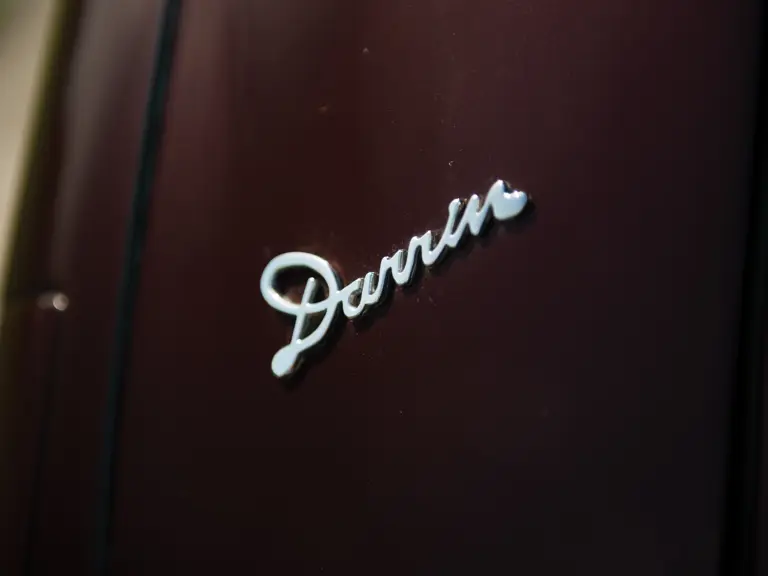
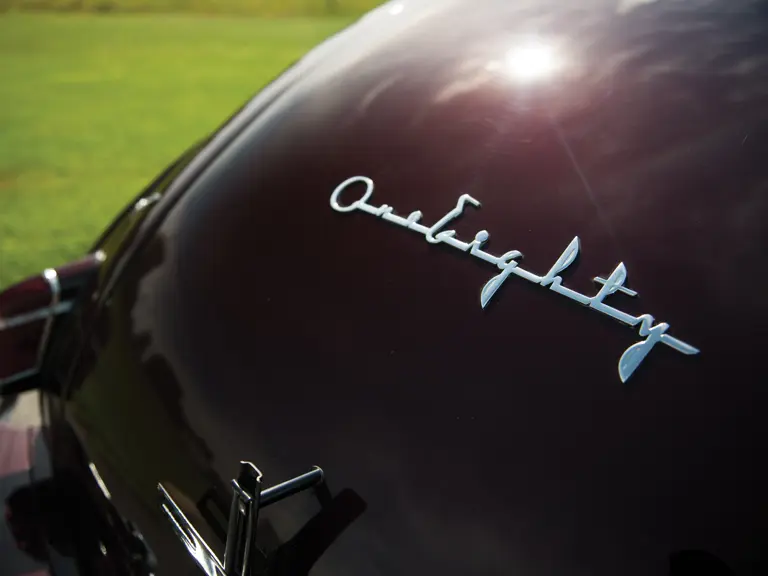
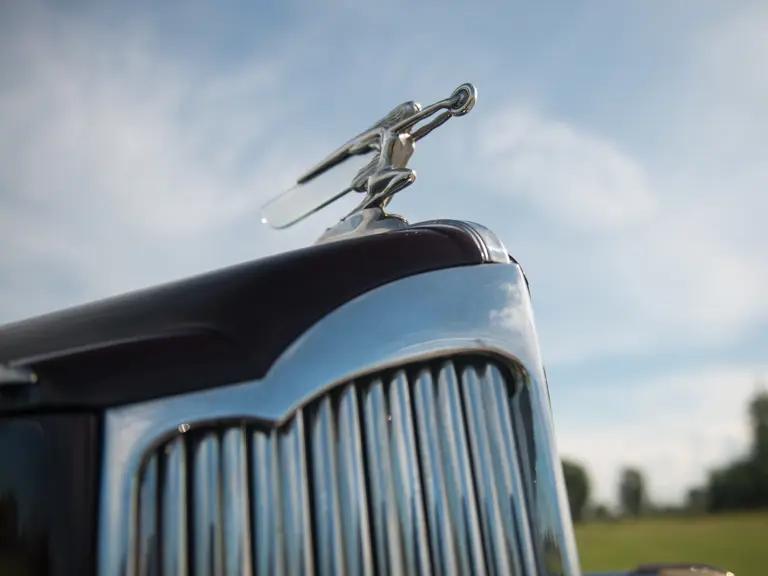
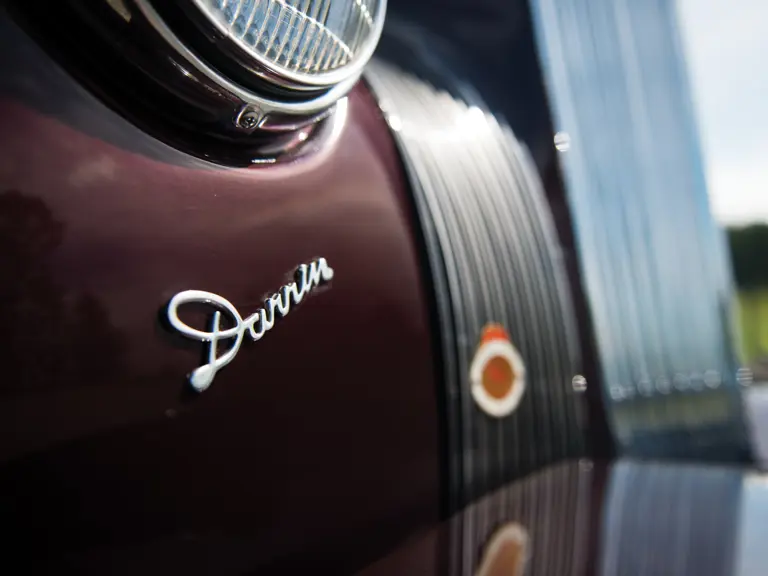
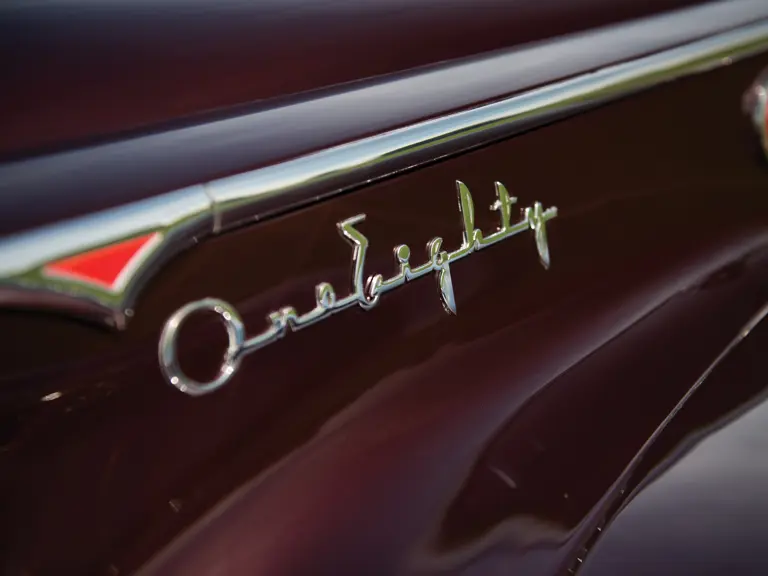
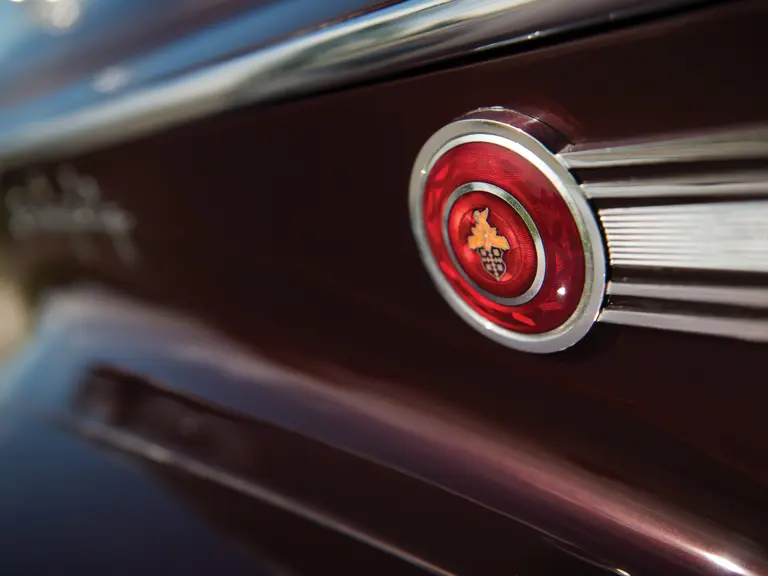
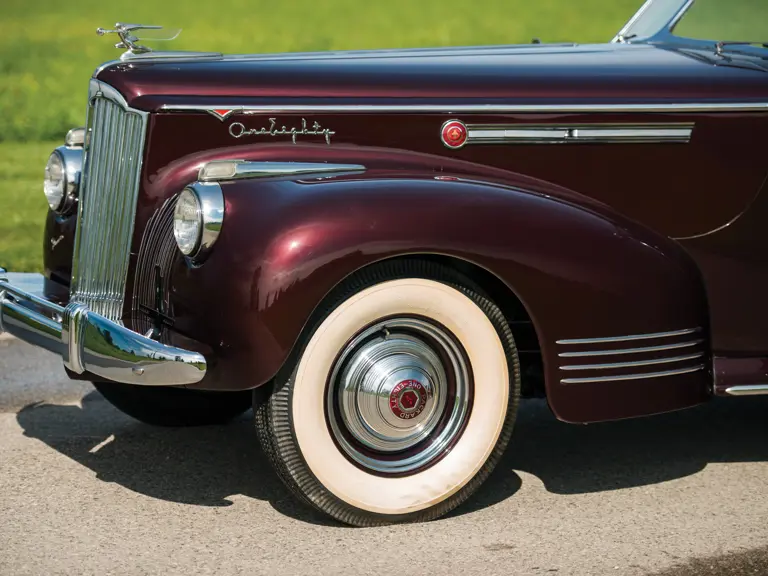
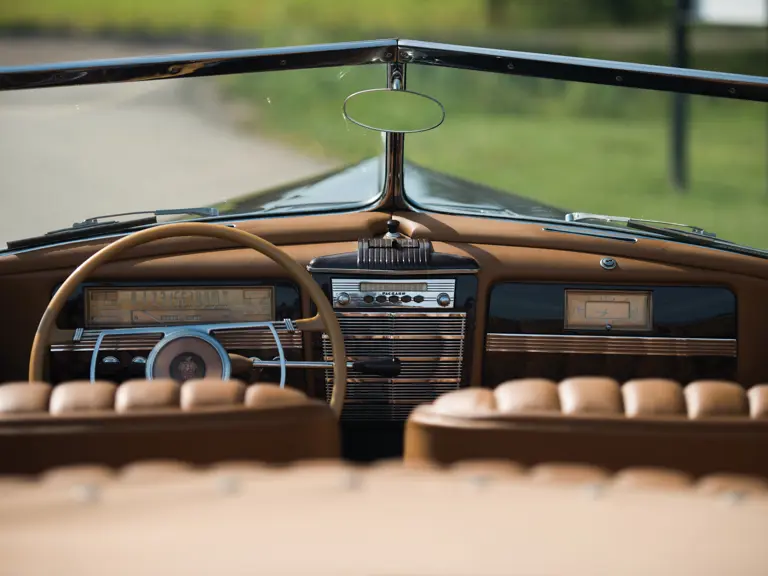
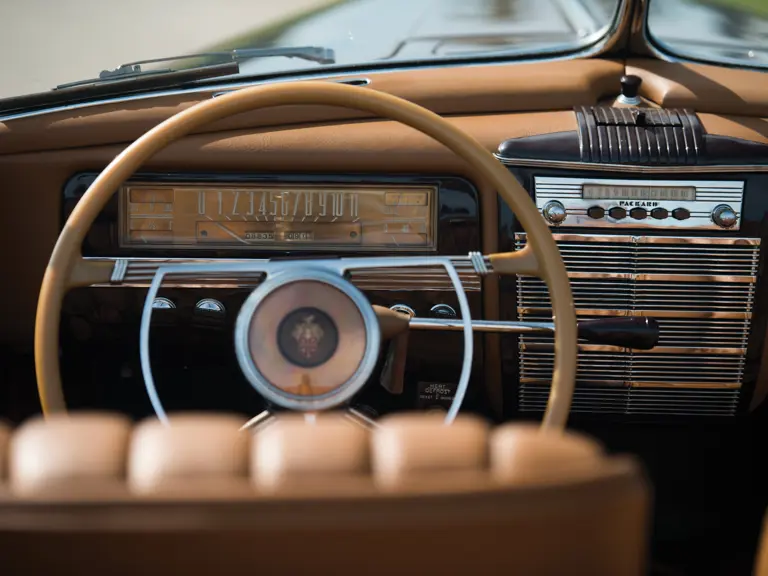
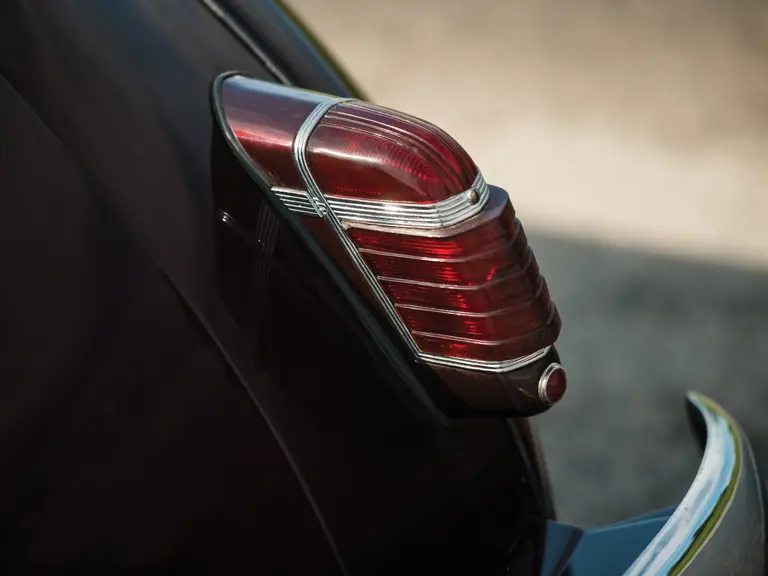

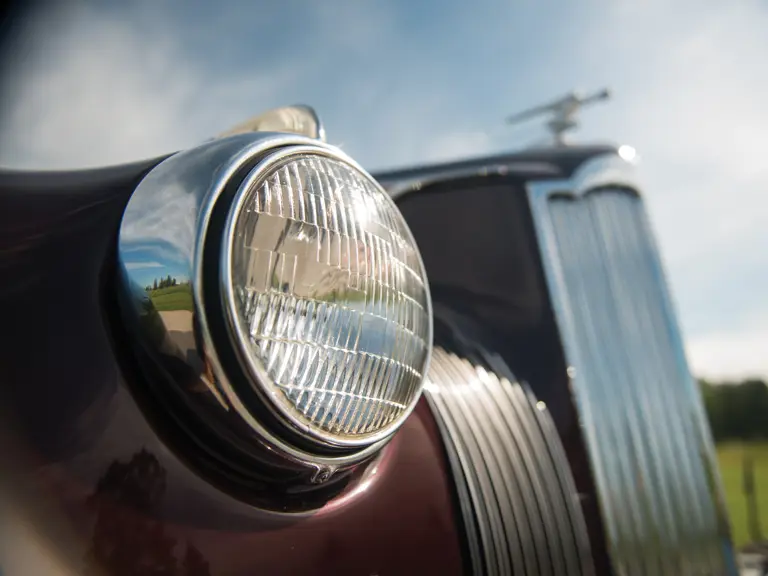

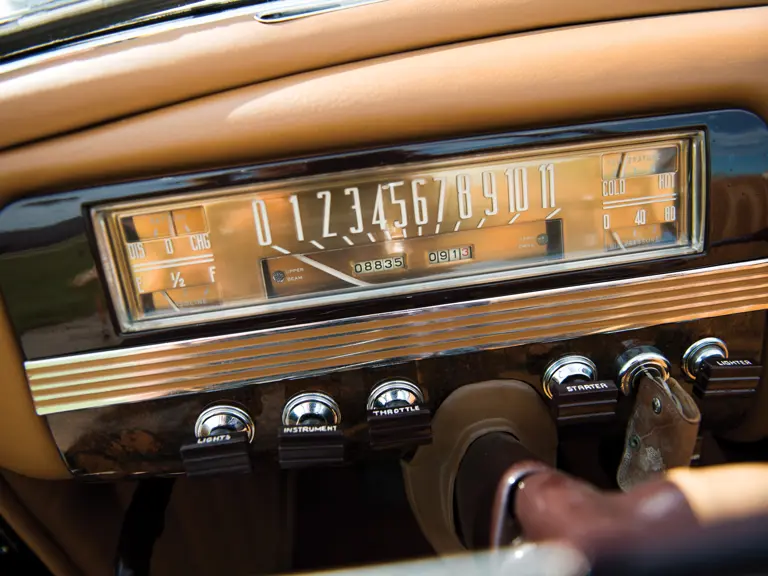
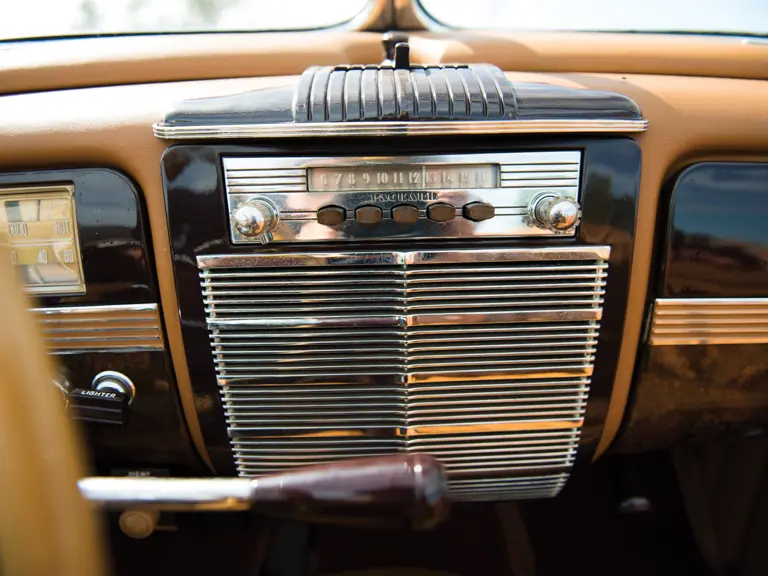
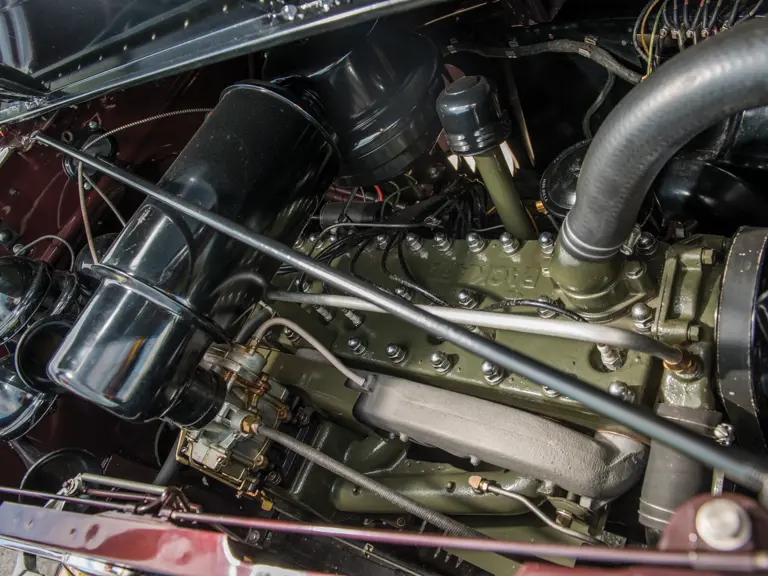
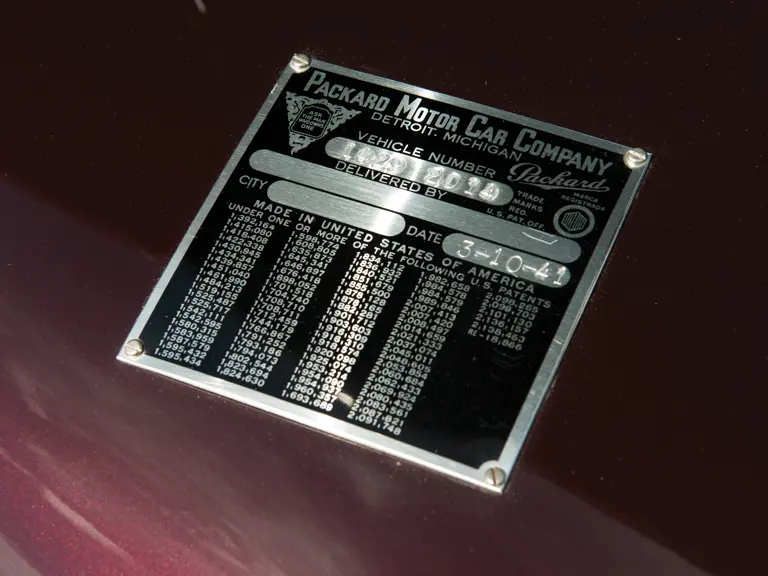
 | Hershey, Pennsylvania
| Hershey, Pennsylvania
